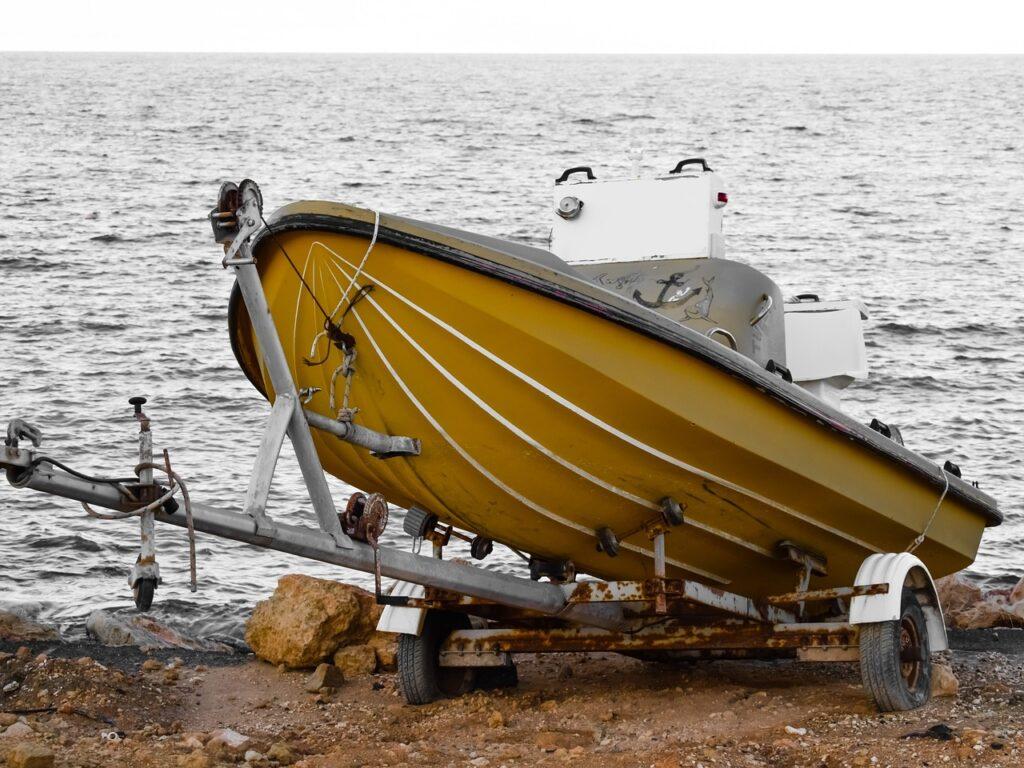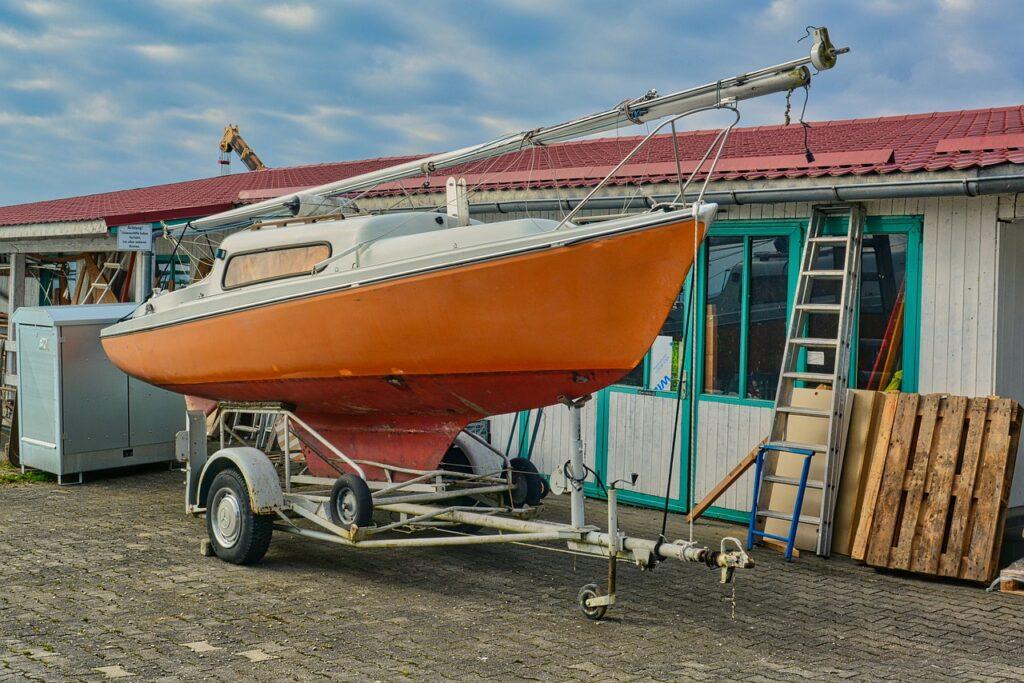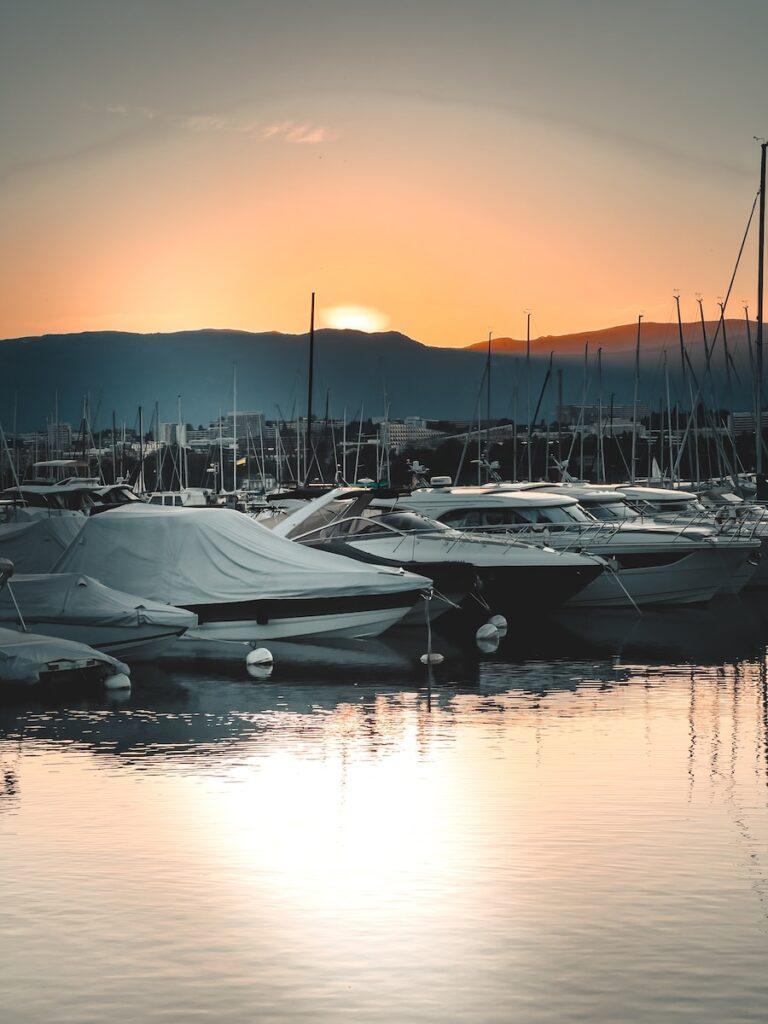Best Boat Trailer Bearings
Boating is a popular pastime for many people, but the process of transporting a boat from one location to another can be quite challenging. Having the right equipment is essential for a safe and efficient voyage, and one of the most important pieces of equipment is a quality set of boat trailer bearings. In this article, we’ll discuss what boat trailer bearings are, why they’re important, and the best types of bearings to use for your boat trailer.
Best Boat Trailer Bearings
The best boat trailer bearings are those that are specifically designed for marine applications. These bearings are designed to be corrosion resistant, have a high degree of durability, and be able to withstand the wear and tear of being exposed to moisture and saltwater. These bearings should be regularly lubricated and inspected for signs of wear or damage in order to ensure optimal performance.
Timken Boat Trailer Bearings: Timken is a well-known brand in the bearing industry, and their boat trailer bearings are highly regarded for their durability and reliability. They are designed to withstand the heavy loads and constant exposure to water and harsh conditions.
SKF Boat Trailer Bearings: SKF is another reputable brand that offers reliable boat trailer bearings. Their bearings are designed to provide smooth and efficient operation, with excellent resistance to corrosion and wear. They are known for their long lifespan and high performance.
NSK Boat Trailer Bearings: NSK is a trusted manufacturer of bearings, and their boat trailer bearings are engineered to withstand the demanding conditions of marine applications. They offer excellent load-carrying capacity and are designed to resist water, dirt, and corrosion.
NTN Boat Trailer Bearings: NTN is a well-established bearing manufacturer that produces high-quality boat trailer bearings. Their bearings are known for their precision, durability, and resistance to water and contaminants. They are designed to handle the heavy loads and constant motion associated with boat trailer use.
When selecting boat trailer bearings, it is important to choose a bearing that has been designed with the correct load rating for your specific application. It is also important to choose a bearing with the correct inner and outer dimensions for your trailer. If you are using the bearing in a saltwater environment, make sure to choose a stainless steel bearing to ensure corrosion resistance.

How do I know what bearings to get for my boat trailer?
The best way to determine what bearings you need for your boat trailer is to consult the owner’s manual or contact the manufacturer of your trailer. They should be able to provide you with the exact size and type of bearings required for your trailer. If you are purchasing new bearings, you should ensure that they are rated for the weight of your boat and trailer, as well as the type of environment they will be exposed to (such as saltwater).
- Identify the make and model of your boat trailer.
- Check the owner’s manual for specific bearing requirements.
- Measure the inner and outer diameter of the spindle and the hub width.
- Look for a bearing kit that matches the measurements and requirements of your trailer.
- Make sure to purchase the correct quantity of bearings for your trailer.
When selecting bearings for your boat trailer, it is important to ensure that they are of the correct size, type, and load rating. You should make sure that the bearings are designed for the environment that they will be exposed to, such as saltwater or freshwater, as this can affect their lifespan. If you are not sure what size and type of bearings are suitable for your trailer, it is best to consult the owner’s manual or contact the manufacturer.
They are a type of roller bearing that are used to support the weight of a boat while it is being transported. They are typically made of high-grade steel and are designed to reduce friction between the trailer and the boat, making it easier to move the boat on the trailer. The bearings are also designed to absorb shock and vibration, which can help protect the boat from damage during transport.
They are components of a boat trailer’s wheel assembly. They are typically made of metal and contain ball bearings that help to reduce friction between the axle and the wheel hub. They are lubricated to ensure they last as long as possible. They need to be maintained and replaced periodically to prevent wear and tear.
Why Are Boat Trailer Bearings Important?
Boat trailer bearings are an essential part of the boat transportation process, as they provide both support and protection for the boat. Without the bearings, the trailer and boat would be exposed to too much friction and shock, which could lead to damage and an increased likelihood of accidents. The bearings also reduce the amount of stress on the trailer’s axle, which helps to extend its life.
They are important because they provide the necessary friction to keep the axle of the trailer turning smoothly and reduce the wear and tear on the axle components. Without them, the trailer would be more prone to wear and tear and wouldn’t be able to handle the weight of the boat as well. They are also important for ensuring the trailer is able to navigate properly on the road and reduce the risk of breakdowns.
Types of Boat Trailer Bearings
There are several different types of boat trailer bearings available, and choosing the right one for your trailer will depend on the type of boat you’re transporting and the conditions you’ll be traveling in.
Roller Bearings: Roller bearings are one of the most common types of boat trailer bearings. They use cylindrical rollers instead of balls to distribute the load evenly, resulting in higher load capacity and better resistance to shock and vibration.
Tapered Roller Bearings: Tapered roller bearings are another popular choice for boat trailers. They have tapered inner and outer races that allow for better distribution of the load and can handle both radial and axial loads.
Ball Bearings: Ball bearings use balls to reduce friction and allow for smooth rotation. While they are less commonly used in boat trailer applications, they can be found in smaller trailers or lighter-duty applications.
Sealed Bearings: Sealed bearings, also known as sealed hub units, have integrated seals that provide additional protection against water, dirt, and contaminants. They require less maintenance and are ideal for boat trailers that are frequently exposed to water and harsh conditions.
Oil Bath Bearings: Oil bath bearings use a housing filled with oil to lubricate and cool the bearings. They offer excellent lubrication and heat dissipation, making them suitable for high-performance or heavy-duty boat trailers.
Regular inspection and proper lubrication are essential to ensure the longevity and performance of your boat trailer bearings. The most common types of boat trailer bearings are:
Ball Bearings
Ball bearings are the most common type of boat trailer bearings, as they are durable and relatively inexpensive. They are made up of two concentric rings and balls, which are designed to reduce friction and provide support. Ball bearings are best suited for smooth surfaces, such as paved roads.
Tapered Bearings
Tapered bearings are similar to ball bearings, but the inner ring is tapered instead of round. This allows the bearing to better absorb shock and vibration, making it ideal for rough terrain. Tapered bearings are typically more expensive than ball bearings, but they offer superior protection for the boat.
Needle Bearings
Needle bearings are designed to provide support while also allowing for flexibility. They are made up of several small cylindrical rollers, which are designed to reduce friction and provide support. Needle bearings are best suited for boats that require frequent movement, such as fishing boats.
Radial Bearings
Radial bearings are designed to provide support and stability while also allowing for flexibility. They are made up of several small cylindrical rollers, which are designed to reduce friction and provide support. Radial bearings are best suited for larger boats that require frequent movement, such as sailboats.
How to Choose the Right Boat Trailer Bearings

When choosing the right boat trailer bearings for your trailer, there are several factors to consider. You should consider the type of boat you’re transporting and the terrain you’ll be traveling on. If you’re going to be on paved roads, ball bearings are likely your best option. If you’re going to be on rough terrain, tapered bearings may be a better choice. You should also consider the size and weight of the boat, as this will determine the size and type of bearing you need.
When choosing the right boat trailer bearings for your trailer, it is important to consider the load capacity and the environment in which the trailer will be used. You should also consider the size and type of bearing for your trailer as well as the bearing lubrication requirements. The type of bearing you choose should be able to handle the load capacity of your trailer and the environment in which it will be used. It is also important to research the proper installation and maintenance of the trailer bearings.
Maintenance and Care for Boat Trailer Bearings
Proper maintenance and care are essential for keeping your boat trailer bearings in good condition. Before each trip, you should inspect the bearings for any signs of wear or damage. You should also regularly lubricate the bearings to reduce friction and ensure they are operating properly. You should never overload your trailer, as this can put excessive strain on the bearings and cause them to wear out prematurely.
They require regular maintenance and care in order to ensure that they remain in proper working condition. This includes checking the bearings for any signs of excessive wear or damage, and replacing them when necessary. In addition, it is important to regularly inspect the seals, lubricate the bearings and replace the grease if necessary. It is also important to ensure that the trailer is level and that the axles are properly aligned, as this will help to keep the bearings in good condition.
Common Issues with Boat Trailer Bearings

Despite the importance of boat trailer bearings, they are not immune to problems. Some of the most common issues with boat trailer bearings include:
Overheating
One of the most common issues with boat trailer bearings is overheating. Overheating can occur due to a lack of lubrication or due to excessive strain on the bearings. If the bearings become too hot, they can fail, causing serious damage to the trailer and boat.
Wear and Tear
Wear and tear is another common issue with boat trailer bearings. Over time, the bearings can begin to wear down, reducing their effectiveness and leading to more friction. This can cause the trailer to become less stable, increasing the risk of accidents.
Corrosion
Corrosion is another potential issue with boat trailer bearings. If the bearings are exposed to water or moisture, they can begin to corrode and break down. This can cause the bearings to become less effective and increase the risk of accidents.
Conclusion
They are an essential part of the boat transportation process, as they provide both support and protection for the boat. There are several different types of boat trailer bearings available, and choosing the right one for your trailer will depend on the type of boat you’re transporting and the conditions you’ll be traveling in. Proper maintenance and care are essential for keeping your boat trailer bearings in good condition and ensuring a safe voyage.
FAQs
What are the best boat trailer bearings for saltwater use?
When it comes to saltwater use, it’s important to choose boat trailer bearings that are specifically designed for marine environments. Look for bearings that are made with corrosion-resistant materials such as stainless steel or have protective coatings to prevent rust and corrosion.
How often should boat trailer bearings be replaced?
The frequency of bearing replacement depends on various factors, including the usage and maintenance of the boat trailer. However, it is generally recommended to inspect and repack the bearings at least once a year or every 12,000 miles, whichever comes first. If you notice any signs of damage, wear, or increased friction, it’s essential to replace the bearings promptly.
Are there any specific considerations when choosing boat trailer bearings for heavy-duty applications?
For heavy-duty applications, such as hauling larger boats or frequent long-distance trips, it’s crucial to choose boat trailer bearings with higher load capacities. Look for bearings that are rated for heavy-duty use and have features like larger rollers or increased ball count to handle the higher loads.
